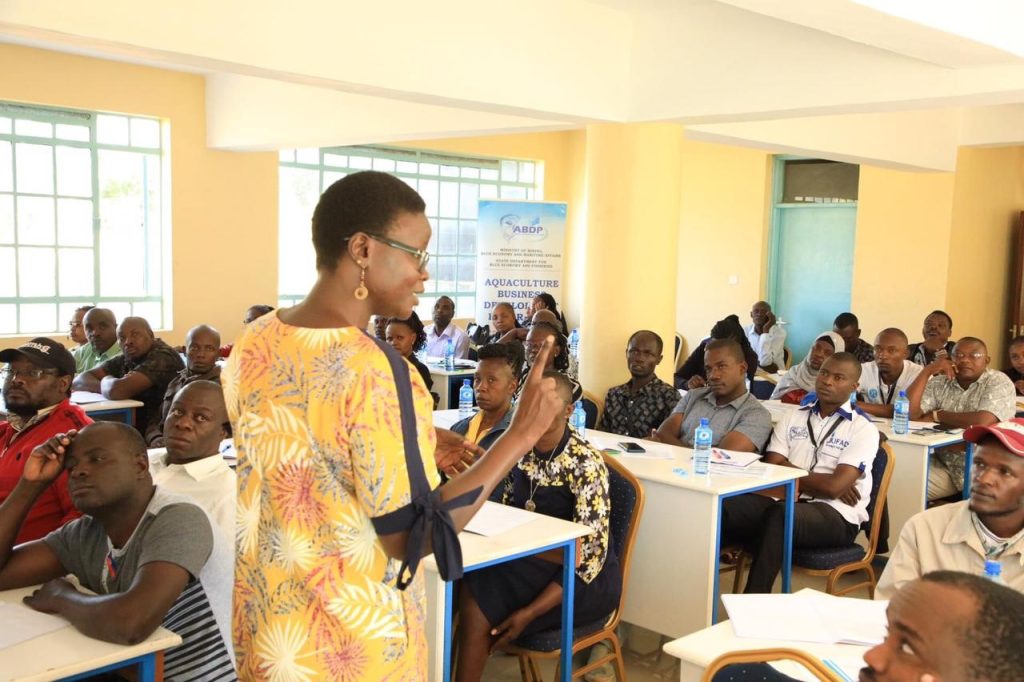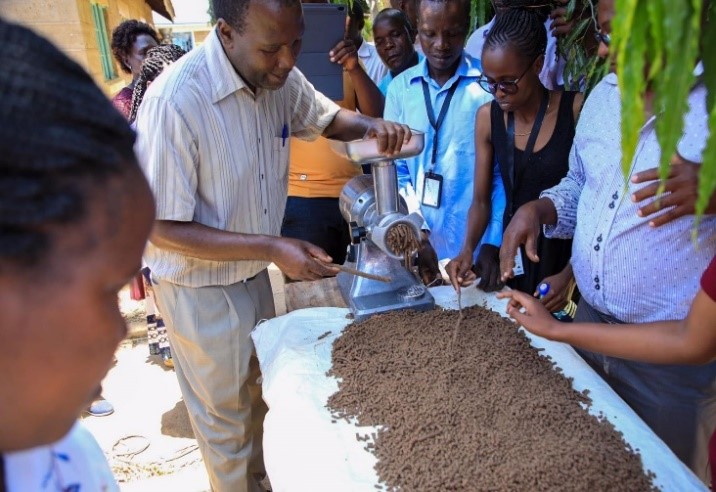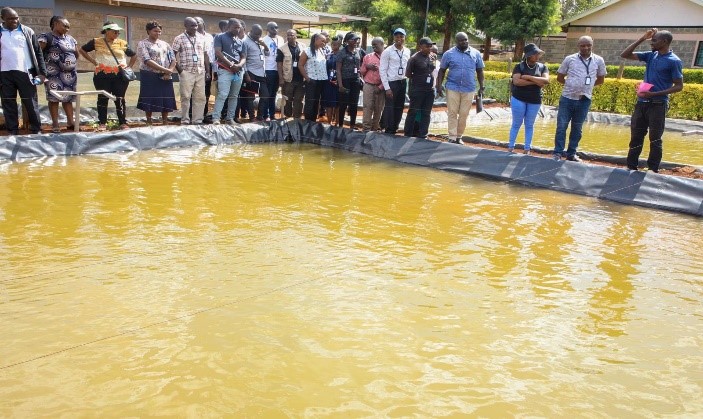Aquaculture Technologies Innovations and Management Practices (TIMPS) Training
The TIMPS Training, which took place at the National Aquaculture Research and Development Training Center (NARDTC) in Sagana, equipped extension officers with essential knowledge and practical skills in various facets of aquaculture. This intensive program covered a comprehensive range of topics critical for effective aquaculture management. Let’s delve into the key components of this training.

Culture Systems:
Participants gained insights into different aquaculture systems, including pond-based, cage-based, and recirculating aquaculture systems. Understanding these systems was crucial for optimizing fish production.
Culture Species:
The training explored various fish species suitable for aquaculture, emphasizing their growth requirements, behavior, and market demand. Participants learned to make informed decisions regarding species selection.
Tilapia and Catfish Seed Production:
Extension officers delved into the intricacies of seed production for two prominent aquaculture species: tilapia and catfish. Techniques for hatchery management and fry production were covered.
Technologies for Live Feed Production:
Participants learned about live feed organisms (such as zooplankton and rotifers) and their role in supporting fish larvae and fingerlings. Practical methods for live feed production were demonstrated.
Fish Feed Formulation:
Understanding the nutritional requirements of fish was essential. The training covered feed formulation, ingredient selection, and feeding strategies to optimize growth and health.

Water Quality Management:
Extension officers explored water quality parameters, monitoring techniques, and strategies for maintaining optimal conditions in aquaculture systems. Proper water management directly impacted fish health and productivity.

Cold Water Aquaculture:
Cold-water species have unique requirements. Participants learned about their culture, including temperature control, disease prevention, and growth optimization.
Fish Diseases and Treatment:
Recognizing common fish diseases and implementing preventive measures was crucial. The training covered disease identification, biosecurity practices, and treatment options.
Biosecurity in Aquaculture:
Extension officers understood the importance of biosecurity protocols to prevent disease outbreaks. Measures such as quarantine, disinfection, and controlled access were emphasized.
Fish Handling and Hygiene:
Proper handling techniques during harvesting, transportation, and processing were essential. Participants learned hygiene practices to maintain fish quality.
Post-Harvest Reduction and Value Addition:
The training addressed post-harvest losses and value-addition techniques. Extension officers explored ways to enhance product quality and marketability.
